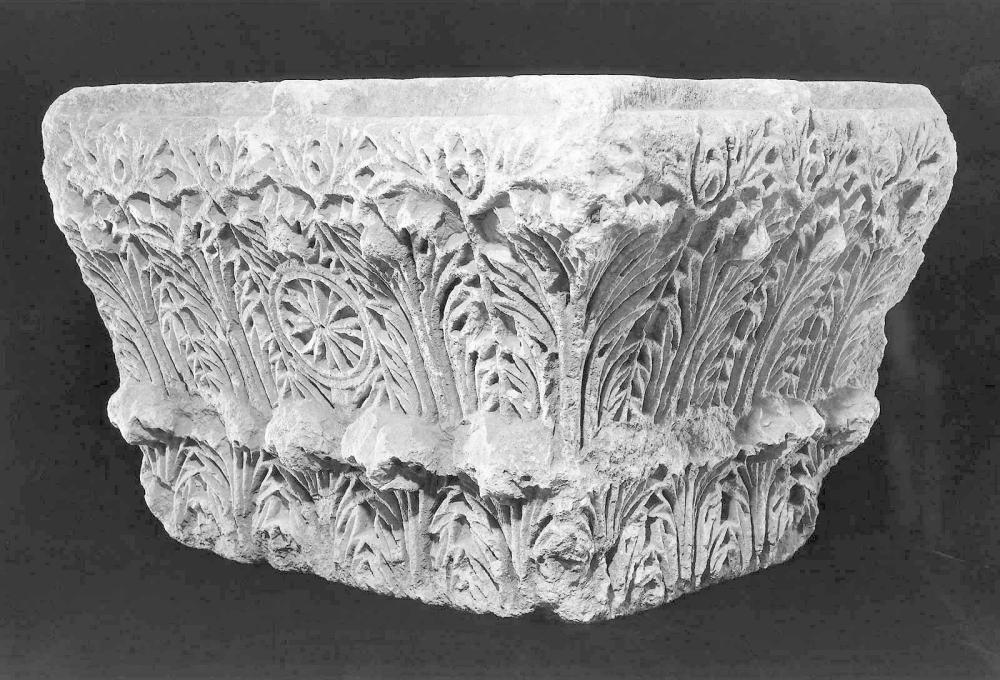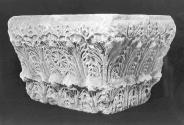Advanced Search
Corinthian pier capital
Byzantine
Early Byzantine Period
mid 5th century A.D. – mid 6th century A.D.
Place of Manufacture: Northern Syria
Medium/Technique
Limestone
Dimensions
Overall: 50cm (19 11/16in.)
Diameter and weight: 740 lb. (335.7 kg)
Framed (Contoured rectangular steel plate / wooden pallet): 10.6 x 86.4 x 70.5 cm (4 3/16 x 34 x 27 3/4 in.)
Diameter and weight: 740 lb. (335.7 kg)
Framed (Contoured rectangular steel plate / wooden pallet): 10.6 x 86.4 x 70.5 cm (4 3/16 x 34 x 27 3/4 in.)
Credit Line
Gift of Mr. and Mrs. John J. Herrmann, Jr.
Accession Number1978.500
CollectionsEurope, Ancient Greece and Rome
ClassificationsArchitectural elements
Catalogue Raisonné
Sculpture in Stone and Bronze (MFA), no. 055.
DescriptionCorinthian pier capital with rich foliage over the entire surface. In the center leaf, a roundel filled with an ornamental cross motif has been carved. Reddish patina, some ancient damage to leaf tips.
This style of carving is found in the decorative architectural sculpture of churches throughout Northern Syria as well as in the Capital Constantinople (Hagia Sophia, SS. Sergius and Bacchus, Polyeuktos). This as well as chancel screen (1978.499) and corinthian captial (1980.469) come from Northern Syria in the rural communities surrounding the capital city of Antioch.
This style of carving is found in the decorative architectural sculpture of churches throughout Northern Syria as well as in the Capital Constantinople (Hagia Sophia, SS. Sergius and Bacchus, Polyeuktos). This as well as chancel screen (1978.499) and corinthian captial (1980.469) come from Northern Syria in the rural communities surrounding the capital city of Antioch.
ProvenanceBy 1976, John J. Herrmann and Ariel Herrmann, Dedham, MA [see note 1]; 1978, gift of Mr. and Mrs. John J. Herrmann to the MFA. (Accession Date: December 13, 1978)
NOTES:
[1] Lent to the MFA beginning in 1976. According to Sculpture in Stone and Bronze (MFA, Boston, 1988), p. 62, cat. no. 55, the capital was acquired "years ago from the collection of a Lebanese diplomat in Geneva."
NOTES:
[1] Lent to the MFA beginning in 1976. According to Sculpture in Stone and Bronze (MFA, Boston, 1988), p. 62, cat. no. 55, the capital was acquired "years ago from the collection of a Lebanese diplomat in Geneva."




